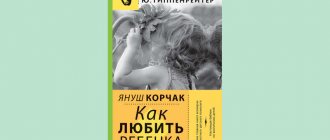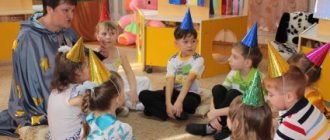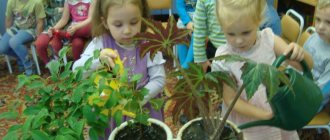Today there are a huge number of different development methods and systems, including non-standard ones, for preschool development and upbringing of a child. Every year - more and more. It is not surprising that this causes a mixed reaction among professionals: there is a Federal State Educational Standard, there are programs, what other “lettergrams” and “spiritual approach to the development of a child’s free personality”? There is definitely a subject for debate. Our expert Marina Bolotova, the scientific director of preschool educational organizations, has carefully studied many popular and original modern methods due to her work. This article is a specialist’s answers to the TOP 5 alternatives to the classical approach. So as not to miss the important things behind the emotions.
All the methods we talk about in this article are focused on the environmental approach: the child is in a specially organized environment that best satisfies the child’s needs.
Montessori pedagogy
Technology invented by teacher Maria Montessori. Initially, she conceived the approach to work with “special” children, but then transferred it to everyone else. The main idea of the approach is that every child has a powerful potential for development; you just need to create conditions using a special environment and not disturb the child.
What principles does it work on?
- A special environment is created, divided into five zones. Practical for the development of everyday skills, sensory with toys of different shapes, sizes, colors, mathematical for the development of counting skills and familiarity with geometric shapes and symbols, language zone for learning letters and syllables, space zone for getting to know the outside world and the mysteries of nature.
- Classes are held in different age groups. Older children interact with younger ones: they pass on their skills to the younger ones and not only teach them, but also develop their skills even better.
- Teachers do not impose or forbid anything on the child - he makes the choice to play with dolls, draw or jump and run. The teacher only presents the material and reveals it as much as possible.
What goals does the child achieve?
- Learns independence. Free choice of activities also develops self-confidence and self-confidence.
- Learns to respect others. Children work and play quietly to respect the time and space of others. You can let off steam in a special “motor” zone. Children also clean up toys after themselves and follow the principle “whoever takes it first gets to play.”
- He studies mathematics, learns about nature and culture. This is helped by working in different zones.
- The teacher must respect children and their choice: give them the opportunity to play and choose the pace of classes.
- The teacher must be able to create an environment. Many toys are made by hand from natural materials.
- The teacher must be able to captivate children. It is he who presents materials for games and activities, and he serves as a model in group creative activities.
Mental education
If parents do not pay enough attention to this aspect, then it will be much more difficult for the child to integrate into the educational process at school. Therefore, it is extremely important that the baby is inquisitive and able to think from a very early age. At the same time, attention is paid to the development of memory, speech and attention.
According to teaching methods in the field of preschool education, by the age of six, a child should be able to draw. This means that you need to teach your child to at least repeat certain patterns. If he has a penchant for creativity, then you should not limit him. Children who draw rather than copy have great potential, which is recommended to be developed more.
Also, before going to school, the child must learn to color pictures and be able to at least partially follow the contours. This is important, since in the first years at school he will focus on spelling.
In addition, parents are recommended to teach their child to learn short rhymes. It would be good if he knew what a retelling is. Therefore, you can read short stories to your child and then ask him to describe what he remembers.
By the age of six, children can often count to at least 10. They know where they live, can name the last and first names of their mother and father, and understand the seasons. It is worth teaching the baby months. Some parents, even before going to school, explain how to correctly determine the time on the clock.
It’s easy to see that a lot is required from mom and dad. Parents should teach their child the basics so that in first grade not all information is a discovery of a new world for him. To achieve the best results, it is recommended to study the basics of preschool education methods.
As a rule, mental development involves the use of various educational games. It is worth reading books to your child as much as possible, and not allowing him to spend all his free time in front of the computer or with a mobile phone in his hands.
Reggio pedagogy
Italian technology, based on the ideas of Vygotsky and Maria Montessori. The author of the technology is Loris Malaguzzi. Malaguzzi believed that the child had at least 100 languages, but 99 of them were stolen. Much in a child’s life happens at the direction of adults, even holidays. The main postulate is that the environment must meet the needs and capabilities of the child.
What principles does it work on?
- A separate program includes space for the child. He can even retire and do only what he wants.
- The parent is completely immersed in the work of the kindergarten. He sometimes goes to kindergarten with the child, helps, and becomes a partner.
- There is no assessment and control - no final tests. The Reggio teacher uses observation, records the results of the child’s work, but does not give an assessment.
What goals does the child achieve?
- Learns partnership. Children are taught to work in groups so that they learn to negotiate, cooperate, and get used to the fact that they are “not alone.”
- Studies culture. Classes are not limited to the kindergarten environment: children are taken on excursions, helped to understand relationships between people, the rules of society, and traditions.
- Learns free choice. The child himself chooses the pace of classes and the materials with which he will play.
What should a teacher be like?
The teacher must follow six rules:
- Respect the child and look him in the eye.
- Explain the rules and ask a question. Only this way, and not the other way around.
- Not “wrong”, but “different”.
- Offer choice and don't rush.
- Learn in any situation.
- Fantasizing is more important than reading.
Preschool education programs and methods
The general educational process primarily means certain educational actions that are combined with training and preparation for school. Thus, this is a whole complex of activities. Some parents send their children to preschool education institutions, where teachers prepare them for subsequent education.
Thus, the educational methodology of preschool education is fundamental. It consists of four stages. First of all, it is important to pay attention to the formation of the child’s personality. He must learn to form his own judgments and assess the situation. The second stage is organizing the child’s actions. This means that the child must be able to interact with adults and peers. Even before the first trip to school, the child should already have some experience of communication.
In addition, it is important to form the correct self-esteem and motivation in the child. For this purpose, different methods of preschool education and upbringing are used. They can be successfully used at home.
Voskobovich games
Educational games created by physicist-engineer Vyacheslav Voskobovich. They represent a developing environment of different zones and elements, united by one fairy-tale plot.
What principles does it work on?
- It is based on three principles: interest, knowledge and creativity. This builds cognitive and research skills.
- Games are developed in accordance with the interests of the children. Each can be used by children from 2 to 7 years old; for younger children the tasks are simpler.
- The developmental environment “Purple Forest” has been developed for games, with several zones in which the child fulfills certain needs.
What goals does the child achieve?
The main goals of technology are learning new things, developing the ability to observe, building confidence, a harmonious approach to the development of emotionality, imaginative thinking and logic.
What should a teacher be like?
- The teacher must understand the material: know the games, be able to build a plot.
- The teacher must involve the children in the game; some time must be spent getting to know its rules.
- The teacher does not evaluate the completion of assignments. Each age has its own level; if you can’t cope, you can move on to an easier one.
Belief
With the development of preschool education methods, specialists are increasingly using precisely these methods of interaction with children. In this case, we are talking about the fact that the parents talk to the baby as to an adult, explaining to him the correct actions and unacceptable ones.
In this case, it is important to take into account the individual characteristics of the child’s behavior. The conversation should be conducted in such a way that the conversation is as logical as possible for the child. There is no need to indulge in complex demagoguery and jump from one topic to another. The child must focus and understand what is required of him.
This is one of the so-called blocks of teaching methods in preschool education. First of all, a child needs to be formed into a personality that will be ready for educational activities. Considerable importance should also be given to mental preparation and motor development. It is worth considering these features in more detail.
Dewey technology
John Dewey developed a practice-oriented approach. Dewey believed that a preschooler should engage in play and work activities, which gives him the necessary life experience.
What principles does it work on?
- Everything that happens to a child must be practically oriented. There is no need to overload the brain with unnecessary knowledge; you need to teach how to work with your own hands, and apply acquired knowledge and skills in other situations.
- Education should be aimed at gaining experience, which can only be accumulated by the child himself. Thinking is only a tool for solving problems. The child explores the world around him and ultimately wants to learn the necessary skills and experience them.
- In addition to work skills, geography and history are important. Geography helps to learn about the world around us, history helps us learn about the world and culture of people.
What goals does the child achieve?
- Gains life experience. The child learns to solve problems and develops skills.
- He understands geography and history. This helps to understand the world around us and people with their relationships.
- Learns to be entrepreneurial. This is facilitated by the projects that the teacher launches with the children.
What should a teacher be like?
- Must have strong instrumental skills, such as working with hands. Without this, he will not teach the necessary skills to children.
- Does not compare children with a friend - competition is prohibited in technology. The child is compared only with himself.
- Teaches children project activities. Projects help children gain experience and learn skills, as well as collaborate with others and develop their own entrepreneurial spirit.
Promotion
A similar method of teaching, preschool education and upbringing allows you to adjust the child’s behavior. A child who is preparing to go to school must learn to distinguish bad deeds from good ones and correctly place emphasis. He must not behave inappropriately in society. It is important to develop respect for his parents.
Thanks to encouragement, the child’s positive thinking is strengthened. If he feels positive by doing something good, then it will help him become a good person. It is worth considering that until the age of six, children really need praise, so this method is very effective. However, it is important not to develop too much of a consumerist attitude in your child.
Therefore, this method of preschool education must be used very carefully. For example, you should not say: “If you brush your teeth today, I will give you a new toy.” It’s better to wait until the baby completes the required action and give him a small present, as if for no reason. His brain will automatically associate pleasant emotions with brushing his teeth.
Dr. Suzuki's method
Violinist and teacher Shinichi Suzuki believed that all children are naturally talented, so this should not be ignored. If children are surrounded by pleasant music and classical works, this will help them become wonderful, kind and open people.
How to raise children using this method
Sh. Suzuki believed that if a child begins to talk by being completely immersed in his native speech, then by the same principle one can surround him with music and unleash his creative potential.
Basic provisions of the methodology:
- The baby should listen to music from birth, and from the age of two you can teach him to play musical instruments;
- You can send him to a music school when he begins to show a real craving for art;
- work should take place in groups of 3-4 people, so that everyone has the motivation to follow the others;
- The repertoire is carefully selected for each musical instrument so that skills develop gradually.
Advantages and disadvantages
Advantages:
- the method is based on internal motivation, so the likelihood that learning music will get boring is minimal;
- can be tested on any child, because everyone has talent;
- can be used as a complement to other parenting approaches;
- The baby develops a sense of beauty.
Flaws:
- many areas of development are touched upon only superficially;
- classes do not guarantee that the student will become a virtuoso musician and achieve great success.
Waldorf school
This is an education system invented by the German educator Rudolf Steiner. He believed that children should discover and receive methods of self-development and self-knowledge through their own thinking.
The entire method is aimed primarily at spiritual development. Teachers are required to reveal the child’s potential and his talents in such a way as to give him faith in his own strength.
How to raise a child
All development occurs at a pace convenient for the child: education begins at the age of 7, but basic subjects are introduced only after 2-3 years.
The main thing is not to memorize the material, but to imitate adults through role-playing games. Therefore, the main activities of Waldorf schools are dancing, singing, theatrical performances, drawing and working with various natural materials.
Development is divided into 3 stages, which have different goals:
- previous education - mainly practical exercises and games;
- primary education – socialization and artistic development;
- secondary education – development of critical thinking and empathy for others.
One of the features of Rudolf Steiner's technique is considered to be eurythmic dances - these are 20-minute breaks for physical activity (claps, stomping, dancing, reading poetry and singing). These can often be related to topics that children are currently learning.
Moreover, the material is presented not in the usual order, but in epochs. If the era of native literature is studied, then it is reflected in all subjects. Even history is not taught in chronological order, but with topics that relate to the basic concepts of the current era.
The teacher does not grade students and does not leave unsuccessful students for a second year. But at the end of each school year, he writes a detailed report on each of the students, which is given to parents.
Advantages and disadvantages
Among the advantages of the Waldorf school are:
- comfortable conditions and pace of learning suitable for each student;
- comprehensive personality development;
- creative development and unlocking the potential of each child;
- an atmosphere of goodwill helps to unite people and learn to interact with them.
There are also disadvantages:
- the educational system is built on the principles of anthroposophy (the idea of the trinity of man - Spirit, Soul and Body), which not all parents support;
- the peculiarities of the Waldorf school may make it difficult for the student to socialize and defend his point of view;
- children with high intellectual development may lose interest in learning due to lack of new information;
- students are always busy with some kind of activity and do not have free time, so they get very tired;
- The technique implies that parents must spend a lot of time with their child both at school and outside of it.
Physical education
Do not forget that at school the child will be engaged in more than just mental activities. You need to understand that the first 6-7 years of a child’s life are characterized by increased activity and mobility. During this period, it is very important to direct it in the right direction. As a rule, this responsibility falls on the parents. Or you can send your child to a sports section for the little ones, where a specialist will take on this mission.
If we talk about working independently with a child, then in this case it is worth paying attention to several important stages. First of all, the child must understand what recovery is. Experts recommend practicing hardening procedures, preventing flat feet, etc.
By the age of 6, it is worth teaching your child to swim, run, jump and the simplest games on the playground. This will help build his endurance, agility and speed of reaction. Since children at this age are quite active themselves, it will not be difficult to involve them in such activities. For example, parents can start doing sports or recreational treatments in the fresh air with their child. This will also help strengthen the family bond.
It would be a good idea to buy sports equipment. If a child has a horizontal bar, a jump rope and a ball in his room, he will be able to practice independently, without the participation of adults. However, the area of a children's room does not always allow you to place everything you need there. In this case, you can enroll your child in the sports section.
Physical education helps to discipline a child. He gets used to the daily routine and begins to understand what a healthy lifestyle is. At the same time, strong-willed qualities are developed. The child begins to understand that not everything comes so easily. In order to achieve this goal, it is necessary to make considerable efforts. All this also has a positive impact on the formation of the future student’s personality.
It is also worth considering that today there may be outdated methods of preschool education. Retraining of specialists has become very important, since what worked 50 years ago is not so effective in the age of computer technology. Therefore, it is worth considering several techniques that are successfully used today.




